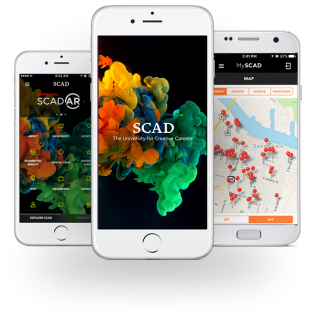Randi Zuckerberg's Blog, page 13
April 19, 2017
Radio Recap: Barbara Corcoran
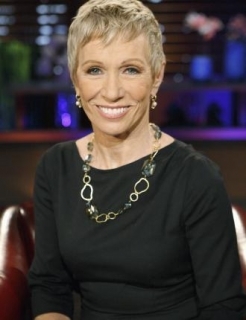
In 1973, struggling waitress, Barbara Corcoran, received a $1,000 loan from an ex-boyfriend to open a real estate business selling apartments in Manhattan—and The Corcoran Group was born. By the mid-1970s, Barbara was publishing The Corcoran Report featuring real estate data developments in New York City, landing her a position as one of the top real estate experts in New York. Over the next two decades, Barbara Corcoran would turn that that $1000 loan into a billion dollar empire, eventually selling The Corcoran Group for $66 million, just days before 9/11.
With the sale of The Corcoran Group, Barbara’s worth as a real-estate expert skyrocketed. She’s now NBC TODAY’s real estate contributor; the host of CNBC’s The Millionaire Broker with Barbara Corcoran; she’s a columnist for The Daily Review, More Magazine, Redbook and the New York Daily News. She’s appeared on Larry King Live, travels around the world as a speaker and as a business consultant. She’s the author of 3 books including If You Don’t Have Big Breasts, Put Ribbons in Your Pigtails, and Other Lessons I Learned From My Mom. But perhaps Barbara Corcoran is best known today for her savvy investment skills on the hit NBC series Shark Tank where she invests in start-ups and businesses of new entrepreneurs in exchange for an equity percentage of that company, like that of food truck, Cousins Maine Lobster or online bakery, Daisy Cakes. In the first season of Shark Tank alone, 8 of the businesses that Barbara invested turned a big time profit.
“I had the perfect childhood for making you ready for life.”
“I got practice at being a team player being one of ten children.”
“When you only have two parents to go around and ten kids you don’t get a lot of attention. I think that’s why I went into TV. More attention.”
“My dad worked two jobs his whole life to support us.”
“My mom was incredibly accurate. She said my brother was going to be a ballet dancer the day he was born—and he grew up to be one.”
“The only goal my parents had for us to grow up to be nice people.”
“It’s freeing to have nothing to lose and nowhere to go but up when you grow up poor.”
“All us kids were working by the time we were 11. My mother demanded that we give 50% back to the household.”
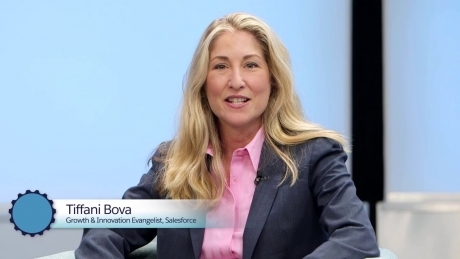 “’The Power of Broke’ is such a great title.”
“’The Power of Broke’ is such a great title.”
“The only job I hated was as a nurse’s clerk. I liked the uniform.”
“My first job was a playground supervisor. My last job was a waitress at a diner in Jersey. I had my own territory.”
“By the time I got to be a boss at 23 I was a good boss because I had the experience of 22 jobs.”
“You learn from every job the same way you learn what cut of pants look good on you.”
“The first day in the brokerage business I was that waitress again working sales.”
“I never thought of myself as a woman. I thought of myself as a worker.”
“I did get upset when I was filled with a room full of men and if someone talked down to me.”
“All the real estate firms in NYC are run by men and worked by women.”
“I would make it my point to schmooze anyone who told me I couldn’t do something. My duty was to show them I could do anything.”
“When I would go into a male meeting in short, bright skirt. I have great legs. I’d play up asset I had.”
 “Take whatever your assets are and exaggerate them. It gets you over your shyness too.”
“Take whatever your assets are and exaggerate them. It gets you over your shyness too.”
“I noticed I had 15 female managers before I hired one man.”
“Females don’t take credit the way a man does. I learned to brag early on. It’s nothing more than raising your hand.”
“For two seasons on Shark Tank the men would talk over me. I learned to speak up.”
“ I was doing work as a Fox News political consultant. Thank God I’m not doing that now, I’d be a drunk.”
“Shark Tank wanted to see financial statements to make sure you could afford to fund the businesses.”
“I bought three new suits, two for signing autographs.”
“The sales business is all about rejection. Rejection is my sweet spot.”
“When Donald Trump said I wouldn’t see a penny of the $5 million he owed me I got all of it in federal court.”
“Over the years I’ve developed a huge muscle to stand back up and take another shot.”
“I work my ass off, get to the alter and not get it. But it’s that ‘one more time’ attitude that seals the deal.”
“The only thing the best entrepreneurs have in common is that ‘get back up mentality’.”
“The minute they cast the blame on someone else I know I don’t have a winner.”
“Really successful people take less time feeling sorry for themselves.”
“I don’t care so much if their product is the next best thing. In fact I’m afraid of it. I want that fighter personality.”
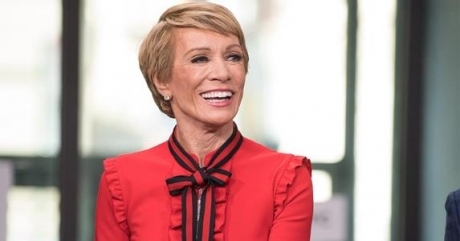 “When investors go astray they believe too much in the numbers. I don’t believe numbers. I make numbers up. I believe in the person.”
“When investors go astray they believe too much in the numbers. I don’t believe numbers. I make numbers up. I believe in the person.”
“People who talk too much want to be heard.”
“There’s a lot in a name.”
“I know what makes a great agent and what makes a pretend great agent.”
“NYC is a miracle town. Real estate keeps going higher.”
“I’m always asked the same questions about who’s succeeding and why, so I told the whole story through Shark Tales.’”
“No one wanted to live above 79th street when I first started.”
“Daisy Cakes, a dollar a cake. My first business I made a profit. She was 40 and sexy. Her website crashed. Her phone was ringing off the hook.”
“My first year I saw I was going to make a profit I bought a new car for my mother and one for my father. Nothing ever measured up to that feeling again.”
Read more about Barbara HERE
Join ‘Dot Complicated with Randi Zuckerberg’ every Wednesday on SiriusXM Business 111 at 12pm ET/ 9am PT
April 12, 2017
Radio Recap: Women in Tech Summit
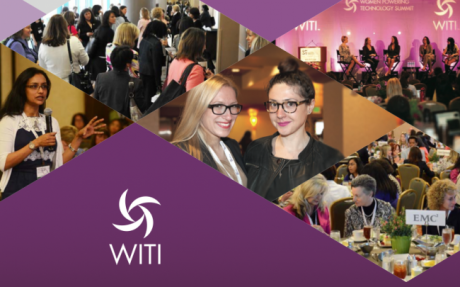
In 10 days Philadelphia will open its arms to the annual Women in Tech Summit, a two-day conference which aims to inspire, educate and connect women in the tech industry. The event will be a combo of workshops, panel discussions, and networking, all culminating into the many career opportunities in tech and how to pursue them. All profits generated from each of the 5 Women in Tech events around the nation will support the non-profit TechGirlz and its ongoing mission to inspire middle school girls to explore the possibilities of technology to empower their future careers.
Here with me today to discuss The Women in Tech Summit and their own work in the tech industry are the founder of TechGirlz and co-founder of the Women in Tech Summit, Tracey Welson-Rossman, and Executive Vice President of Wilco Electronics System and Women in Tech Summit panelist, Brigitte Daniel Corbin.
“It’s important for us to see why women aren’t getting involved in the innovation economy.”
“WITS came through Chariot called the Emerging Tech Conference. There weren’t enough women there.”
“I was concerned why we weren’t seeing more women in tech.”
“We had 125 people at Women in Tech Summit this first year.”
“It was a test. Would women come out on a Saturday to learn tech?”
“I use tech everyday in sales and marketing.”
“If you’re making decisions for your company, you’re a technologist. Not every one wants to become a computer programmer.”
“At other women in tech events, we weren’t seeing the in-depth talks.”
“Every job is going to have tech associated with it.”
“Last year we went to DC and North Carolina. We’re opening Boston and Denver.”
“It’s important to us to convey a message of positivity.”
“We’re here to showcase women who are doing a lot and how we can make a difference.”
“If you’re in tech and you’re a woman, you need to be out here.”
“I got a lot of credit for my work, but I have great teammates.”
“The people we’ve surrounded ourselves with are doers.”
“Women in tech is not just a social justice issue.”
“Currently 500,000 jobs in tech are open with 1.4 created by 2020.”
“We’re all fighting for talent at businesses. We can’t fill it with white men.”
“52% of the working population are women. 57% of grad degree holders are women.”
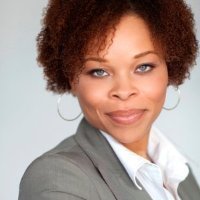 BRIGITTE CORBIN DANIEL
BRIGITTE CORBIN DANIEL
“Whenever you have a tech gadget everything applies to that one brand.”
“Tech is moving all the time. We had to get used to the swipe and tap. Soon we’ll be blinking and thinking.”
“Wilco provides cable to closed communities at a discounted rate to underserved communities. We’ve been doing it for 40 years.”
“In 2011 Philly started to bridge the digital divide.”
“We’re all about everyone having entry points into technology.”
“Using Your Uniqueness to Your Advantage is the panel I’ll be speaking on.”
“We often talk about diversity in a negative way. My panel will talk about women who use their difference as status.”
“National Equity Payday is that black women in tech make $79,000 for every $100 white men make.”
“Mogulette came from helping women of color get that seat at the table too.”
“Maybe women and people of color don’t ask for that money. Maybe we haven’t been asking because we haven’t been getting it.”
“If they keep making excuses it’s just going to be status quo.”
“When it comes to diversification and inclusivity, the US is still ahead of many countries. Other countries with support systems have more options.”
“We have to do better as a nation. In Philadelphia, we are trying to be more inclusive.”
April 5, 2017
Radio Recap: Women’s March + Public Radio

Bob Bland is a New York City fashion designer and the CEO and founder of Manufacture New York—a social enterprise geared at rethinking the fashion ecosystem with new ways of promoting indie apparel companies and local textile production for the 21st century. And if that isn’t cool enough, she’s also the Co-Chair of the Women’s March on Washington.
“As someone who can’t remember all of my passwords, I’m all about biometrics.”
“I grew up in Northern Virginia outside of D.C. Both of my parents were public school teachers.”
“I got my entrepreneurial bug from my taekwondo master. His spirit lives on in me.”
“I’ve been sewing forever, I couldn’t stop. My mom taught me.”
“The family that kicks together sticks together. I learned community for taekwondo.”
“It’s important for all of us to recognize how important it is to have a protégé learning everything we’ve learned.”
“Every single one of us has a superpower. We can contribute in our own way with our passion.
“Fashion is the number two polluter in the world. There are a billion jobs. There are different ways fashion impacts the industry.”
“Everyone has a different type of device—or no device at all. But 100% of all people will probably be wearing clothes.”
“I’m an accidental activist. The Women’s March on Washington was my first time organizing something bigger than a local scale.”
“I got up on November 9th and couldn’t believe I was living in this alternate universe.”
“I realized I could be depressed or do something about how I felt.”
“A Hawaiian grandmother had also put up the same idea to have a march on Washington on Inauguration weekend.”
“We organized very quickly and every hour 10,000 people said yes, they were going to this. Our FB was flooded with messages.”
“24 hours later we have over 125,000 people saying they were going. We had already set up all the different states.”
“The momentum showed the impact of women we have together.”
“All of the incredible women on our organizing committee allowed it to be the largest mass mobilization in US history. Women stepped up.”
“We need to take the Women’s March example and put them toward our own initiatives.”
“With the Women’s March, we were the spark. We don’t own this movement.”
“Go to WomensMarch.com and go to the Unity Principles.”
“We’re seeing incredible coalitions like 2 Hours a Week, Swing Left. There’s different ways to combine social media and activism.”
“Manufacture NY launched 400 brands. I’ve had experience with launching websites.”
“Younger entrepreneurs need the skills to launch their own ideas as well.”
“Immediately in my mind I saw the idea for a Nasty Woman tee-shirt that even an executive could wear.”
“Within 48 hours we were able to donate $20,000 to Planned Parenthood for the Nasty Woman T.”
“My baby came early because of all the Women’s March planning.”
“ You need tech skills to be an activist today. For us dinosaurs, remember that Gen Z has those skills.”
“If you don’t have tech skills, that should not prevent you from getting involved.”
“I was trying to replicate an outfit on the cover of Seventeen magazine. That was the first thing I designed.”
“I was making all my friend’s prom dresses in high school.”
“Every part of my career has led to the next part. There’s no achievement. It’s about the journey.”
“One of my first fashion jobs I was applying for, when they realized I wasn’t a man, hung up on me.”
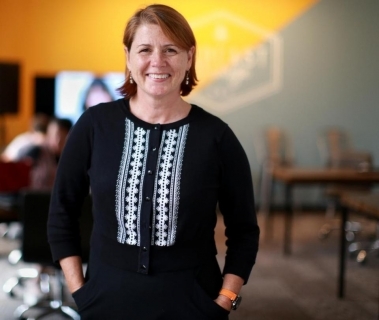
Kerri Hoffman is the CEO of Public Radio Exchange, an award-winning company shaping the future of public media content, talent and technology. PRX is a leading creator and distributor, connecting audio producers with their most engaged, supportive audiences. For over a dozen years, PRX has operated public radio’s largest distribution marketplace, offering thousands of shows including This American Life, The Moth Radio Hour, On Being and Reveal.
“Like many women and many moms, my path is a crooked path. It involves many great people who helped.”
“I started my career with Greenpeace, hanging from buildings.”
“I learned early on to help artists be successful pay attention to the funding and support.”
“In 2002 we were interested in giving radio shows a longer life. We built a licensing revenue for those shows.”
“We gave more choice to people listening to public radio.”
“We created a database to diversify the airways quickly.”
“We were naturally aligned with public broadcasting and podcasters eventually as well.”
In 2014 we created Radiotopia, a curated network of podcasts.”
“Greenpeace was a formative place to work. It taught me to not be afraid. That’s a lesson you have to get when you’re young.”
“Public radio is turning 50 this year. It’s commercial free radio dedicated to art and education.”
“The big brands like NPR have been around for a while. PRX was born into the digital space.”
“There are 800+ public radio stations around the country. They create a network of content.”
“Vermont airs a show called Vermont Edition where they tackle local issues.”
“Public radio is fueled by what’s happening in the world.”
“The number of crime podcasts that exist because of Serial is astounding.”
“The more content we’re exposed to, the more creative content we create.”
“One of the things that happened with The Moth the exposure to great stories meant people were telling better stories.”
“The same thing is happening in TV. No one would argue that this isn’t amazing content on television. Tech makes it better.”
“For podcasters: Telling a really good story is a tall order. Sound engineers advance the story.”
“You have to know who you’re making your podcast for. You have to market it well too.”
“Some of the more successful niche podcasts serve the listener.”
“We’re very intentional about hiring women. It’s not just the hosts. Our sales teams, our engineers.”
“When we started Radiotopia comedy podcasts dominated. Two guys with a microphone kind of content.”
“We had a contest opening up to podcasters, giving everyone a fair shot to help shape their good idea.”
“My attraction to Greenpeace was their biggest campaign, Save the Whales. I put my life on the line for the US climate convention in the 90s.”
“My first job with public radio was cutting checks manually. And I mean manually.”
“The Moth was my first podcast that I ever really listened to and related to. I became a huge fan of 99% Visible.”
“We recently opened the Podcast Garage in Boston, a low-cost studio anyone can train or host from.”
“You can prototype faster and test in podcasting. You can’t do that in broadcast.”
“A great way to start with podcasting is the Radio Public Mobile app.”
Join Randi Zuckerberg every Wednesday at 12pm ET/9am PT for new guests on Dot Complicated! Only on SiriusXM Business Channel 111!
March 29, 2017
Radio Recap: Defy Ventures + 5 to 9 Podcast

Catherine Hoke is the founder and CEO of Defy Ventures, a United States-backed nonprofit that transforms the street hustle skills of the formerly incarcerated into legal entrepreneurship. During Defy’s first year, they recruited 1,000 business executives who invested 8,000+ hours to help Entrepreneurs in Training—or EITs. Defy has served 550+ formerly incarcerated EITs across 24 states with less than 5% recidivism.
“We believe that drug dealers and gang leaders have the same skills as big entrepreneurs.”
“Gangs often have boards as well. If we equip them with the skills they need to be entrepreneurs so they can grow.”
“We serve 500 released people in our program. We’ve rolled out in prisons around the country.”
“We have different formats like hosting Shark Tank pitches.”
“We don’t call them ‘ex-cons’ because we’re all ex-somethings.”
“People say our work is second chance work, but it’s really first chance work. “
“We help place people in jobs when they get out of prison.”
“People talk about inclusion. Come to prison, this is your opportunity to do something.”
“Our recidivism is 3.2% Nationally everybody is re-entered in prison. They don’t know anybody.”
“When they graduate they get a Baylor business degree.”
“When I went on my first prison visit, I cried my way through because I felt sorry for closing my heart for so long.”
“I asked myself, what would happen if people in prison were equipped with the skills to move ahead.”
“The Prison Entrepreneurship Program started before Defy.”
“5 years into leading PEP, I made some big mistakes in my own personal life. Defy is my second chance.”
“What if you were only known for the worst thing you’ve ever done?”
“I learned that I’m not the only leader who failed in life.”
“It’s my vision to put Defy out of business because prison systems help the incarcerated grow their education and potential.”
“If you want to be a volunteer or mentor to one of these prisoners, email me at cat@defyventures.org.”
“ConBody taught other prisoners how to lose weight, now he has 14,000 customers in NYC and an online platform.”
“We have a guy here in NY who has hired 10 tailors and generated $150,000!”
“The first wrestling match I ever won was against a boy. I was on a boy’s wrestling team.”
“Human beings who make bad decisions still have so much potential.”
“When people see the drive of our Entrepreneurs in Training, they come back inspired themselves.”
“What we do is hilarious and fun and so emotional.”
 Actor/singer, writer/director—it used to be that only entertainers could add the slash into their career summary. Now more and more people are paying the bills in their 9 to 5 job and fulfilling their dreams from 5 to 9. It’s called side hustling, and it can actually turn so lucrative you can quit your day job and follow your passion. Just look at Shark Tank’s Daymond John who worked a Red Lobster for 4 years while trying to build his clothing brand FUBU, now worth millions. Or actor/physician Ken Jeong, of the Hangover movies—he was a licensed doctor, performing stand up on the side when he got cast in Judd Apatow’s Knocked Up. But it’s not as easy as putting all your coins in one prospect, just ask Hulk Hogan, who’s Pastamania restaurant lasted less than a year. Discussing the art of the side hustle is the co-creator of the 5 to 9 Collective, Tina Yip.
Actor/singer, writer/director—it used to be that only entertainers could add the slash into their career summary. Now more and more people are paying the bills in their 9 to 5 job and fulfilling their dreams from 5 to 9. It’s called side hustling, and it can actually turn so lucrative you can quit your day job and follow your passion. Just look at Shark Tank’s Daymond John who worked a Red Lobster for 4 years while trying to build his clothing brand FUBU, now worth millions. Or actor/physician Ken Jeong, of the Hangover movies—he was a licensed doctor, performing stand up on the side when he got cast in Judd Apatow’s Knocked Up. But it’s not as easy as putting all your coins in one prospect, just ask Hulk Hogan, who’s Pastamania restaurant lasted less than a year. Discussing the art of the side hustle is the co-creator of the 5 to 9 Collective, Tina Yip.
“There are a lot of stories of children ordering things they want through Alexa.”
“My background is in advertising and I came to NY from Hong Kong. I’m a brand strategist now.”
“I was raised doing everything, piano, theater—a lot outside of my studies. It allowed me to explore different sides of me.”
“When I started working I kept myself busy outside of work.”
“There was no platform for people to share their side projects on.”
“People want to start a side project but are often fearful of side hustling.”
“I admire people who go all in on their business. But there are many people who are multi-dimensional.”
“I love my full time job but I love the stuff I do on the side. There’s no one right way to portray yourself.”
“Because of survival we need to have a full time job that pays the bills. People don’t realize there’s a lot more to them than their 9 to 5.”
“The people I interview on my podcast have either moved to their side hustle full time or are in transition.”
“I’m here because of my side hustle.”
“On a higher level, it’s about taking care of yourself outside of your 9 to 5.”
“A cliché saying is ‘just do it’, but it’s actually true.”
“’The Subtle Art of Not Giving a Fuck’ is about how to bring your passion to life. It’s not a linear process.”
“Whether you make a to-do list or go to the museum to get motivated, find inspiration everywhere.”
“Set a goal for 30 days and see what happens. Make a plan and start a journal to get something started.”
“One project that stood out was a lady who did a 100 day project called 100 Days Without Fear. She did something that scared her every day.”
“To overcome fear is not become fearless, it’s to be friends with it.”
“I’ve always been a big side hustler because it makes me happy.”
“It’s important to know why you’re doing your side hustle. Does it make you happy? What’s the goal?”
“If your side hustle doesn’t serve you the way you intended, it might be time to let it go.”
“Darren Wong is the founder of the raindrop cake and our first interview on 5 to 9. He started on the side when he created it.”
“I always use the hyper crying emoji. When I’m happy, when I’m sad. I’m pretty dramatic.”
Join Dot Complicated every Wednesday at 12 ET/9am PT! Only on SiriusXM Business Channel 111!
March 22, 2017
Radio Recap: Gwynnie Bee + 3D Printed Knitwear
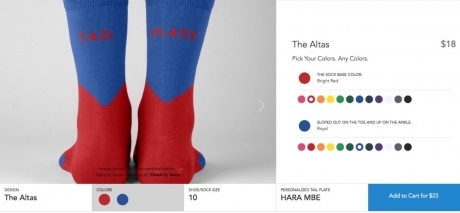
Following the big successes of Netflix, Airbnb, and Lyft, the sharing and rental model is causing disruption in more niche industries, such as shaving products, LEGOS, and even women’s apparel—a $120 billion industry alone. While there are already women’s apparel and rental subscription services on the market, only one has successfully targeted the 70% of American women sizes 10 to 32, and that’s Gwynnie Bee. Sizes 14 and up are considered to be a $22 billion market—one in which teens account for 34% of sales. With Gwynnie Bee, the opportunity to have a rotating wardrobe has not only given women more flexibility in their fashion, but it’s also giving manufacturers a huge uptick in distribution with a built-in customer base. Sitting down today to discuss how she disrupted the size 10 to 32 $17 billion industry using a Netflix rental model is Christine Hunsicker.
“I grew up in rural Pennsylvania where there were more cows than people. I focused on athletics then got into Princeton.”
“I’ve been in the startup space since 2001. This is my first B2C.”
“I didn’t come into this space thinking apparel was the place to go. I used data and market research to get here.”
“We had 20 people working out of NY apartment when we first started. From 6am to 2am different shifts of people at different times.”
“We started with an office in NY, Dehli, and Palo Alto and all were run out of people’s apartments.”
“Fundraising, setting up the vision, and the strategy and hiring are the things I spend my day on.”
“It’s always a struggle to make sure I’m carving out enough time for hiring new people.”
“We decided to focus on sizes 10-32 because it was untapped dollars in wallets.”
“On the straight size (0-14) everyone’s fighting for that model. It’s overcrowded.”
“The core problem in retail is ownership. It puts risk on the supply side.”
“The typical plan is 3 at a time which means three items at home at anytime. Just like Netflix.”
“The average customer cycles through about 9 items a month for about $100. We launch about 12 new items everyday.”
“We went in saying there’s a problem in retail, here’s our approach to solving it. We hooked them on the core tech and marketplace.”
“Approaching investors to meet them where they are is core to delivering the best pitch.”
“Designers don’t want to manufacture plus size clothing because of the tech fit. It’s a different skill set. There’s a skill gap.”
“If there’s receptivity from designers to go into plus size, we help them.”
“Outwear is not meant to be cleaned every two weeks. We put our clothes through 7-9 washes per season.”
“Lifetime has made 30 gifs of my facial expressions from Project Runway: Fashion Startup.”
“My first subscription box we sent was more mature brands. We hand walked it to the UPS and I got to place it on the truck.”
“The first job I got paid for was a soccer referee. It paid really well. $200 over a weekend in the late 80s.”
“The first dress I shared with family members was a Strawberry Shortcake dress. Very country chic.”
“A junior partner wanted me to change my clothing before a meeting. It’s a typical response you get from men.”
“I have a lot of quirky parts to my personality.”
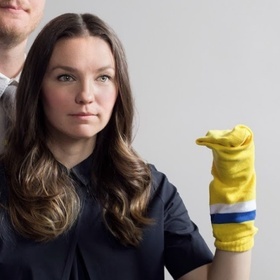 Veronica Harbick is the co-founder and CEO of Thursday Finest, a 3D-printed custom knitware apparel company which prints clothing in minutes. Launched in 2016, Thursday Finest uses 3D-knitting robots and proprietary tech to make custom apparel at scale. Their first four products – socks, hats, scarves and neckties – are made on demand in Brooklyn, in custom styles, colors and granular sizes. They also opened the first pop-up shop that made custom knitwear for customers in-store in minutes.
Veronica Harbick is the co-founder and CEO of Thursday Finest, a 3D-printed custom knitware apparel company which prints clothing in minutes. Launched in 2016, Thursday Finest uses 3D-knitting robots and proprietary tech to make custom apparel at scale. Their first four products – socks, hats, scarves and neckties – are made on demand in Brooklyn, in custom styles, colors and granular sizes. They also opened the first pop-up shop that made custom knitwear for customers in-store in minutes.
“My background is in branding and advertising. I’d see consumer reactions to those products.”
“In the shopping experience, so many things don’t fit personality or style. It’s a pain point.”
“We found 3D knitting in Japan. We use yarn.”
“Sweaters are traditionally made flat panel so it takes a lot of time but creates a lot of waste.”
“Our socks are fully seamless and feet shaped. There contoured to your foot and shoe size.”
“We do a lot of work ahead of time so when you come to our pop up store you get to see it work.”
“My husband and I, who started the company, got to go for a month to Japan to get trained. It was intense.”
“We’re working toward custom clothing made just for you that can be made in your home.”
“There’s 3D printing for leather, fake fur, food.”
“The challenge is creating sustainable textiles.”
“The customer service and human touches need to be done by hand. Everything is fully made in Brooklyn.”
“This tech has been around for 15 years. Labor was cheap then, now more manufacturing is coming back to the US. We’re training people in 3D knitting.”
“We launched reversible hats you can wear 4 different ways. More sustainability.”
“We hold no inventory. Our inventory is cones of yarn and it only has to be a few cones. We don’t have to predict trends.”
“Seamless socks were our second product to launch. They were the first things people asked for.”
“When I moved to the US, the only things I knew to say were ‘hello,’ ‘goodbye,’ ‘I love you,’ and ‘thank you.’
“Whenever you don’t know the person or it’s someone from a company that you value orders from us it’s such a great feeling.”
“We cater to the robots in the office. But we’re staffing in other areas like marketing and design.”
“Our most popular socks are ‘zero fucks’ socks.”
Join Dot Complicated next Wednesday when Tina Yip joins the show to discuss the side hustle generation! Only on SiriusXM Business Channel 111 at 12pm ET/9am PT!
March 15, 2017
Radio Recap: Isabel Castilla + Lisette Titre-Montgomery
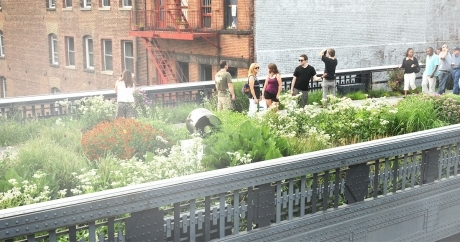 Isabel Castilla is a Principal designer at James Corner Field Operations, where she’s leading the Section 4 redesign of New York City’s innovative High Line, a 23-city block elevated railway reclaimed as a public space. She’s also the Principal on Miami’s Underline, a 10-mile long corridor of parkland, trails and neighborhood connections. Originally from Puerto Rico, Isabel was awarded the Medal for Excellence at University of Pennsylvania School of Design where she received her Masters of Landscape Architecture and Masters of Architecture.
Isabel Castilla is a Principal designer at James Corner Field Operations, where she’s leading the Section 4 redesign of New York City’s innovative High Line, a 23-city block elevated railway reclaimed as a public space. She’s also the Principal on Miami’s Underline, a 10-mile long corridor of parkland, trails and neighborhood connections. Originally from Puerto Rico, Isabel was awarded the Medal for Excellence at University of Pennsylvania School of Design where she received her Masters of Landscape Architecture and Masters of Architecture.
“Unique and dramatic new perspectives are part of reclaiming public spaces.”
“My father was an architecture lover but was not an architect. He had a lot of books that I read.”
“My father always encouraged me to build my own environment.”
“The University of Puerto Rico makes you select your major as a senior of high school.”
“Architecture is my calling.”
“I was an intern at an architecture office that was doing a redesign of the campus of the University of Puerto Rico while I was going to school.”
“I got to work with Field Operations as an intern and led me to my job I have today.”
“Puerto Rico architecture was born out of tropical modernism in the 60s.”
“Puerto Rico architecture works with light and shadow to protect from the sun.”
“I am working on the renovation of Lincoln Road in Miami which uses tropical modernism like Puerto Rico. My specialty.”
“Penn School of Design offered two architecture degrees for the price of one. My teacher said I should explore landscape architecture so I did.”
“Every semester I was jumping between museum design and park design. I never had a class. I was on my own meeting people.”
“Landscape architecture concentrates on anything open to the sky.”
“As cities grow, landscape architecture has helped public spaces, gardens, dog parks thrive.”
“As cities become denser, landscape architecture helps people to have public spaces to enjoy.”
“The High Line is a mile and half long elevated park in NYC, 30 feet above ground. We wanted to preserve the infrastructure.”
“We had a lot of people involved in the High Line. The Parks Dept, Mayor’s Dept, City Planning., etc. We had 20 clients with different ideas.”
“Part of what our office does is becoming the leader of the project. I manager engineers, experts, soil specialists. More than 50 people sometimes.”
“Being a people person and learning how to negotiate your way through helps.”
“I realize not everyone responds the same way. Some people like to text, some email, some call my cell, some call my office phone.”
“Making a personal connection, not just working, is something you’re doing for the public good.”
“After being in construction for two years, seeing the first few kids run on the High Line was quite amazing.”
“As I started my career I was low on the totem pole. I never thought about my gender until I moved up the ladder.”
“I’m still young plus I’m little, so walking into a room with 30 seasoned engineers was scary. Coming in prepared and knowledgeable helps.”
“The Underline in Miami was an opportunity to give people of different neighborhoods a place to go.”
“Ecology and vegetation is important. Creating an ecological corridor with native planting can make a huge difference.”
“I would love to go back to Puerto Rico and create public spaces that make a difference. Especially the waterfront.”
“The Latin American population in Miami is huge. When I speak one on one with the general public, people open up more when I switch between English and Spanish.”
“A lot of contractors speak Spanish so it helps to be bilingual.”
“I had to design a house to observe something for homework. I wanted to build a house to observe corals underwater so I designed a house built into a cliff.”
“Part of the training in architecture is to explain your projects in class. It prepares you for real life.”
“I designed a roof terrace in New York City that had to work for the budget. I had do the presentation on my own but the client loved it!”
“A lot of honesty, seriousness and preparedness helps me do what I do today.”
“As soon as I could hold a pencil, I was drawing.”
“I was a strong student in math and science but I was always creative. The movie ‘Toy Story’ encouraged me to pursue a job in computer animation.”
“One of the biggest challenges is how to translate my creative vision into the computer.”
“The technical leaps from going from pencil and paper to coding was the biggest challenge.”
“Games are technically advanced, yet a creative medium. There’s a vast need of skills to create games.”
“You need to go through the fundamentals of art training and tech skills. But traditional art skills are the hardest to develop.”
“You get to interact and work with people from all over the world. Great for developing people skills.”
“If I ask someone to make a car, it’s going to look different in their country. There are a lot of guides and references needed.”
“Culture shapes how art is made.”
“I teared up a little bit when I saw the chemistry student’s report on me on YouTube.”
“I’ve seen the culture of the industry shift a little bit. There was so few women that we had our own stall in the bathroom.”
“When you’re not part of the main group you feel a little left out. That has changed for me because I look for diverse companies.”
“As someone in position of hiring, I’m always looking for diverse people.”
“Training and proactively looking for mentorship helps you gain leadership skills.”
“Mentorship is invaluable and empathy is important because you’re dealing with people.”
“South Park is a lot of fun. It’s one of the first games I get to use humor as game design. Fans are going to love it.”
Join ‘Dot Complicated with Randi Zuckerberg’ every Wednesday at 12pm ET/9am PT only on SiriusXM Business Channel 111.
March 22nd : Nicole Lapin + Christine Hunsicker of Gwynnie Bee
March 8, 2017
Radio Recap: Work, Pause, Thrive + Wine N Dine App
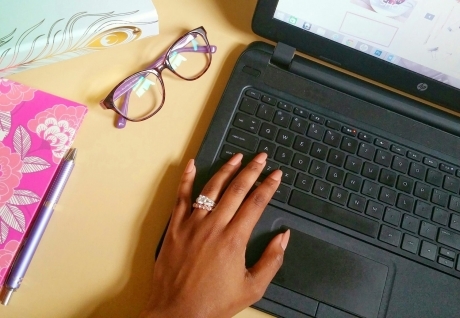 The ever-elusive work/life balance is difficult to attain when the workplace has still not adjusted to the realities of working parents—particularly for women. Today, only 48% of mothers work-full time. In the meantime, 64 million Millennials are expected to become parents in the next decade. While women are struggling to rise to the highest ranks in the workforce, nearly one quarter of college educated women have paused their career to take care of their children. So how can women grow their career while taking care of their family at the same time? Enter Lisen Stromberg, the author of WORK PAUSE THRIVE: How To Pause For Parenthood Without Killing Your Career.
The ever-elusive work/life balance is difficult to attain when the workplace has still not adjusted to the realities of working parents—particularly for women. Today, only 48% of mothers work-full time. In the meantime, 64 million Millennials are expected to become parents in the next decade. While women are struggling to rise to the highest ranks in the workforce, nearly one quarter of college educated women have paused their career to take care of their children. So how can women grow their career while taking care of their family at the same time? Enter Lisen Stromberg, the author of WORK PAUSE THRIVE: How To Pause For Parenthood Without Killing Your Career.
“If you’re under the age of 13, go outside and play. I’m cautious about kids being online.”
“I lied to get my first job scooping ice cream because I wanted to work so bad. I wanted to rock it to the top of the glass ceiling. Then I had my 1st son.”
“I want a great career and rock it but I want to be an engaged parent. I went to my boss at the time to try and get flexibility. They said no.”
“There are so many women who have downshifted their career to make room for the rest of their life.”
“We created this survey for college educated woman. 1500 women responded. The story was 72% had paused their career then relaunched.”
“The narrative that you can’t downshift your career because you’re going to kill it is false!”
“64 million Millennials are about be parents. They need to know how to do it.”
“78% of women who paused their career told us they had no regrets. Plus they felt like they were great role models to their families.”
“My goal is not to encourage women to pause, it’s to help people realize that if you have to pause your career, you can do it strategically and mindfully.”
“There’s a lot of biases women in the workplace. We don’t need drama, we need data.”
“Opt-Out Moms are stereotyped to be lazy and quitters. 63% of women who pause their careers describe themselves as very ambitious.”
“Moms who pause their careers are trailblazers.”
“Smart companies are figuring out how to keep good employees engaged.”
“We have a pipeline problem. But 60% of women in STEM leave their career mid-career.”
“If you’re trying to get women in leadership we need to keep them in the workplace.”
“The Return to Work Internship is where companies take men and women who have been out of the workforce and re-engage them with a paid internship.”
“If you can always view yourselves and nurture our career, then it’ll be easier to restart your career. Keep your LinkedIn page updated.”
“Balance pits work and life against each other. We have to bring both together.”
“I am so heartbroken when I hear women say no one from the office has kids. The two should mix.”
——————————————————————–
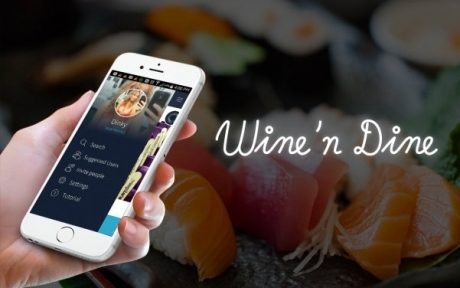
Josh Stern is the co-founder of Wine N Dine, a popular food photo-sharing app that showcases the best dishes at the best restaurants, searchable by city. Giving home to the food community, and taking a page from Instagram #foodporn pics, Wine N Dine tailors food recommendations based on location. It’s also a celebrity hit, being frequented by supermodels and Karadashians, and is even backed by New York Knicks’ powerhouse, Carmelo Anthony.
“Wine N Dine is a great tool to share what you’re eating and drinking with your friends.”
“Instead of reading text of a menu, we have a visual one.”
“You can pull up any restaurant and see it by rating.”
“I jumped into real estate first. We built an all-female hostel.”
“I saw the restaurant industry was lacking the ability to cut through the long lines of Open Table.”
“I’ve always been a picky eater. When I got to college I started experimenting with sushi. Now I go out to eat 5 nights a week.”
“We were in beta for a year. We are just coming into our own product market fit.”
“When we launched, we wanted to be a recommendation platform but people were using it visually. So we created our visual menu.”
“We started gaining traction in Boston, then all of the sudden we were big in Columbia. People in Boston were Columbian college students.”
“The aha moment for every user is when they search a restaurant they love and see the visual menu.”
“All of our beautiful visuals of food have a purpose. If you go to #pasta on Instagram, you can find a ton of beautiful pasta there but it’s just food porn.”
“Funding happened fast for us, which doesn’t happen often.”
“Our main investors were users of the app.”
“Everybody is on mobile. We’re trying to cater to that and cover the needs that people want to do on their phone.”
“Keep iterating, keep adapting to what everybody is doing out there.”
“Back end engineers, shoot us an email.”
“Nobu might have been the first restaurant on Wine N Dine.”
“The concept came to be at Mr. Chow. I took pictures of the wine and Adam said we should create a platform to put food and wine photos.”
“Adam and I are best friends. We’ve known each other since were 3 years old. We went to dinner together every night.”
Join ‘Dot Complicated with Randi Zuckerberg’ next week when she chats with video game developer, Lisette Titre, and landscape architect, Isabel Castilla. Only on SiriusXM Business Channel 111 at 12pm ET/9am PT.
February 22, 2017
Radio Recap: BanterGirl + SHEROES
 By Wikipedia’s standards only 13% of women make up their list of ‘American Stand-up Comedians’, but my first guest aims to change that. BanterGirl is the brainchild of comedian, actor, writer, and producer Trish Nelson. Born out of a successfully crowdfunded campaign, an unexpected internship, and long nights working in the restaurant industry, Trish has been in the comedy business producing events for comedians like Bill Burr and Amy Schumer (the first woman to ever make the Highest Paid Comedians list). Trish also produces Women of Letters, a monthly literary salon that features ladies of New York’s celebrating the long lost art of letter writing. Today Trish Nelson sat down with Randi on ‘Dot Complicated’ to talk about how she’s building an empire of funny women, for all women.
By Wikipedia’s standards only 13% of women make up their list of ‘American Stand-up Comedians’, but my first guest aims to change that. BanterGirl is the brainchild of comedian, actor, writer, and producer Trish Nelson. Born out of a successfully crowdfunded campaign, an unexpected internship, and long nights working in the restaurant industry, Trish has been in the comedy business producing events for comedians like Bill Burr and Amy Schumer (the first woman to ever make the Highest Paid Comedians list). Trish also produces Women of Letters, a monthly literary salon that features ladies of New York’s celebrating the long lost art of letter writing. Today Trish Nelson sat down with Randi on ‘Dot Complicated’ to talk about how she’s building an empire of funny women, for all women.
“Comedy makes politics palatable.”
“Maybe a conversation tracker will be necessary because they don’t know how to talk to each other.”
“I originally wanted BanterGirl to be a non-profit but the contracts in TV and film were too complicated.”
“I took a chance because I knew I wanted more.”
“I’ve always worked for men, unfortunate but it taught me something: I wanted more.”
“I did not like the mass production on entertainment so I decided to do it myself.”
“In Women of Letters we give six women a topic they write a letter in advance. It’s a gateway to discuss the female experience.”
“Being exposed to all these women in Women of Letters, I realized I wanted to be surrounded by diverse females.”
“Comedy is a sneak attack. We’re working on developing TV shows through back door entry. We’re trying to put diverse content out without stereotyping.”
“I don’t expect to change the entire ecosystem of Hollywood, but I’d like to make a dent.”
“BanterGirl Live is a weekly podcast. Anyone can write in to join the conversation.”
“I’m trying to create an empire for all women.”
“Everybody’s voice is important.”
“If you don’t have the means, you can find them. Don’t let life experience hold you back.”
“People were sending me money believing in the message, because I wanted to help diverse women in comedy.”
“Rather than focusing on what you don’t have, focus on what you do have and that it’s enough to begin.”
“Begin and know you won’t have a final product on Day 1. It’s like having a child. You don’t give birth to an 18 year old.”
“I started my career in journalism then went to the corporate space. I realized I belonged in startups.”
“SHEROES is putting women’s careers on the map, especially in a country that is patri.”
“Maya Angelou created the name SHEROES. A woman in the US loaned us the domain after asking Maya Angelou her permission to use the name.”
“Parts of India are still very orthodox. We have class and gender differences. In every situation, women end up bearing the brunt.”
“The statistics show there aren’t as many women in the workforce. They’re doing the work and not getting paid or being accounted for.”
“Women want a space that’s their own and a community of support. SHEROES is a community and network of resources to build a career.”
“We build a community based on mentorship.”
“Women can reach out to get advice and help on our app 24/7.”
“Working from home is one of the most powerful pieces for women in the career puzzle.”
“We are one of the largest curators of work from home opportunities in the world.”
“Women from remote parts of the country gain a lot from working from home.”
“Thanks to good Internet, remote work puts women in a place of power.”
“One of the reasons women kept falling off the career map was because of their families. Fleximoms was born out of that.”
“What businesses need and what women need are the same thing.”
“It’s better to work 3 hours a day than not work at all.”
“It’s hard to put careers back on track when there’s been a disconnect.”
“We see a lot of services-based companies and enterprise operations are some top drivers looking for women in the workplace.”
“What we set out to create—being able to connect women to their aspirations—is actually what we’ve done.”
“It is not so hard for a man to articulate his ambitions. Women have to work on creating that space. It’s not as easy to articulate.”
“For a woman who was a stay-at-home mom, her ambition my be getting out of the house.”
“People say there is one definition of success, but at SHEROES women build their own definition.”
“Men are always talking shop. Women are running the caregiving economy. Women need to be able to talk about their own aspirations.”
“Find a community that’s all about you. Not kids, or parents. Just your own ambition.”
“I get a lot of support from my peers and mentors. They’re why I’m able to do it.”
“My first job was to teach Russian to a couple going to Russia.”
“I did a TedTalk in the US about the feminization of women at work.”
“The open talent economy totally fascinates me.”
“Men have a huge role to play in gender disparity. This is an exercise in shared empathy.”
Join ‘Dot Complicated with Randi Zuckerberg’ every Wednesday on SiriusXM Business Channel 111 at 12pm ET!
February 15, 2017
Radio Recap: Kathleen Stetson + Stephanie Breedlove

Figuring out what to do in a town where arts and entertainment thrive can be a real pain—especially when you don’t know where to look. Luckily there’s Trill which gives you all the current information on performing arts happenings around town all at your fingertips. From music to dance, Trill quickly aggregates a host of information from a variety of sources so users are spared sifting through innumerable listings to find fun things to do. Today on ‘Dot Complicated with Randi Zuckerberg’ Trill founder, Kathleen Stetson discussed how she did it.
“Trial months / weeks are great for the employee to see if it’s the right fit for them.”
“Up until Trill there wasn’t an aggregator for the arts.”
“There are hundreds of events happening all the time. What do you do to choose which one to go to?
“You find out what shows you want to go to by asking your friends. Trill gives friends a bigger megaphone.”
“You can see what people in your city are going to.”
“Trill filters the top events to the top.”
“Growing up we’re asked ‘What do you want to be when you grow up?’ I kept thinking about it but I didn’t just want to do one thing.”
“I enjoyed working with the architects of the arts so I went to get my third MBA.”
“I wanted to use technology to further the arts. The arts missed the tech boom.”
“It’s scary to think that the government wouldn’t be supporting the arts.”
“Arts are good for the culture and the economy. They’re the producer of other industries like travel and hospitality.”
“After the election artists are using their voice to express themselves and how others are feeling.”
“Now there’s an opportunity for the arts community to do something different.”
“I’m working on starting a non-profit now to help fund artists and Americans understand each other.”
“At MIT I saw so many other people interested in the intersection of arts and tech but they weren’t even to meet. So I started Hacking Arts to bring people together.”
“We had 700 applications for Hacking Arts.”
“One of the coolest projects was using VR to help learn about music.”
“Sports brings people together just like the arts.”
“At the first Hacking Arts hackathon I pitched Trill.”
“We’d like to do an American cultural exchange to bring two different people together to do a public art piece.”
“How do you find common ground to create art?”
“Trill is on Boston, NYC and LA.”
After launching her career in corporate America with Accenture, Stephanie Breedlove found her true calling as co-founder and CEO of Care.com HomePay, the nation’s largest and most comprehensive household payroll and tax firm. Stephanie’s new book, All In: How Women Entrepreneurs Can Think Bigger, Build Sustainable Businesses and Change the World, offers examples for entrepreneurs striving to build growth businesses successfully, while still enjoying a fulfilling life.
“I started my career trying to climb the corporate ladder among a small group of women. I realized that it wasn’t my true calling.”
“My husband is my co-founder, he thought we’d be good entrepreneurs.”
“We built our company out of a need. We thought we could help women to go back to work and elderly to be taken care of at home with at home, taxable home pay.”
“We grew a small business in 90s without venture capital.”
“I took a low-risk hop, not a leap.”
“We started in only 3 states for 18 months. It started to grow legs.”
“I had two babies, I was spending evenings and weekends being a slave to my entrepreneurialism endeavor.”
“I had an ‘aha moment’ when I realized I enjoyed slaving away at the entrepreneurial endeavor than my corporate job.”
“I am a strong proponent of not going it alone.”
“Usually you take the leap by yourself, but you hold yourself back if you don’t use multiple brains.”
“We knew that if the business didn’t work it could unravel our lives.”
“We were both passionate about the business. Plus my husband was the strength to my weaknesses. It was a great match.”
“Bring on someone who has different talents when you bring on a co-founder.”
“My book just realized Feb. 7th. We’ll see where the next step of the journey goes.”
“All In is targeted toward women.”
“I spent the better of my 20 year career being the best lead I could be.”
“There are millions of women who are growing a business but not many have taken them to scale.”
“I opted to write a book with the core focus of helping business women find role models.”
“I can’t say there’s a model or standard for the right time to sell. If you have no regrets, it was the right time.”
“Women usually don’t come from financial backgrounds so to get to an acquisition is kind of crippling. I had a benefit a lot of women don’t.”
“You should be ready to sell your business when you’re ready to focus on something else.”
“It’s actually harder to go on without your business after you sell it. If you’re an entrepreneur you want to know what to do next.”
“There is power in being your own hero.”
“People who have role models like them are 3.5 times more likely to start the business.”
“Less than 14,000 businesses out of 3million with women founders are multi-million dollar properties.”
“The more women who do, the more women will follow.”
“We tried to build the service for families like us. We knew we had to pay for help legally. It was a nightmare to figure out.”
“Keeping the home care relationship happy was the goal.”
“I was the mirror image of the clients we were serving.”
“You think you have it all together until someone gets a cold.”
“Our first client was in 1993. This was in the day of fax. We saved the registration paper and framed it. Our client stayed with us for 20 years.”
“I’ve been a household employer for over 20 years. I have a household manager we’ve had for 17 years.”
“All In is a combo of high-level strategies in conjunctions with what life is like along the way.”
“In coming out of running a business to sitting in a lone, cerebral effort, I got to experience a new aspect of myself.”
“All in means making the hard decisions to go where you want to go.”
Join ‘Dot Complicated with Randi Zuckerberg’ every Wednesday on SiriusXM Business 111 at 12pm ET / 9am PT
February 8, 2017
Radio Recap: Sallie Krawcheck + SCAD Augmented Reality
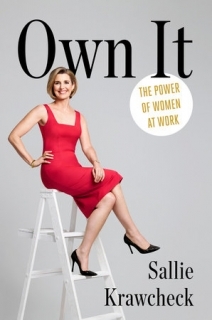
If Own It: The Power of Women at Work is not already the number one book on your 2017 reading list, it should be. Often called the ‘Most Powerful Woman on Wall Street,’ former CEO of Merrill Lynch Wealth, Smith Barney, and Citi Wealth Management, finance titan cum-author-and-investor Sallie Krawcheck is now redefining investing for women with Ellevest, a digital advisor that creates realistic and specific portfolios to empower women to use their longer lifespans and career gaps to work for them to accomplish their monetary goals. Today on ‘Dot Complicated with Randi Zuckerberg’ Sallie Krawcheck discussed how her own rise to the top inspired her to encourage women to do the same.
“Anything that helps bring financial responsibility to kids earlier is great. You know the schools aren’t doing it.”
“I took the one mandatory math class in college. It was only after I graduated I thought I should learn about Wall Street to write about it.”
“I love analysis and dealing with people.”
“I knew I worked with mostly guys but I didn’t think about what that meant until after the financial crisis of 2008.”
“The men of Wall Street didn’t see this coming. I thought people weren’t fully considering all the numbers. It got me thinking about diversity.”
“Diversity isn’t a good to-do, it’s a smart to-do.”
“I became convinced about the power of diverse teams.”
“Women retire with 2/3 the money of men and live much longer. Closing the gender pay gap and gender investing gap for women is the answer to that.”
“The retirement crisis costs women hundreds of thousands of dollars over their course of their lives.”
“The Ellevate network came from engaging with professional woman. Ellevest came later. I have a community of 65,000 professional women.”
“There’s a period of time in building a business when it’s time for the CEO to go away and let people work. So I decided to write a book.”
“So much advice for women is distilled down to act like a guy. The advancement of women has stalled.”
“Business is changing and tech is changing everything.”
“The power of diversity is diversity. Not bringing in people and having them act like men.”
“The typical way of investing is about spending money to make more money. CNBC is NFL Sunday. Women feel cold about this.”
“Women want to invest as a means to end. To buy a house, open a business. Ellevest helps women do those things.”
“Women tell us information about themselves and what they want to achieve. Then we take into the fact that women live longer and career breaks.”
“Do not invest until you’ve got everything paid off.”
“Invest in an IRA or 401K. You can do 1% out of every paycheck.”
“One thing that keeps women from investing is worrying about the market going down.”
“You can invest with as little as a dollar.”
“The Baby Boomer males are the still the biggest amount of investors and also the highest risk investors.”
“Women and Millennials are looking for their money and workplace to work for them.”
“Men accept jobs for money, women accept jobs for meaning and purpose.”
“I had a Passbook savings account in third grade.”
“My first investment was in Ann Taylor. I bought it really well and forget to sell it.”
“I do a highly diversified portfolio and don’t play with stocks at all.”
“My biggest investment was Citigroup.”
“Can you crowdfund it? Women do better than men do.”
“Go to Ellevest.com. We publish a e-book about gender funding gaps.”
________________________________________________________________________
The Savannah College of Art & Design has just become one of the only colleges in the world to attract prospective students using augmented reality to showcase the student experience in the most realistic way possible—without actually setting foot on campus. This summer, SCAD released a 380+ page AR catalog detailing the degrees, majors, and opportunities it offers to creative students. Here with me to discuss the AR student experience are Vice President of Information Technology, Brad Grant, and Executive Director of Interactive Media, David Hanak both of SCAD.
“I run everything tech related for SCAD. That’s all four locations. Whether it’s the tech in the classrooms or the tech throughout the school.”—BRAD
“We handle all the interactive experiences.”—DAVID
“We have our own SCAD app with an AR function that allows you to scan over 85 pages.”
“It all starts with the cover. By scanning the cover it brings everything to life.”
“When you peel open the catalogue, we dig into videos about the campus and get a virtual tour. There’s a lot of micro-action built in.”
“We started with VR for the university a few years ago. We wanted to relate to our students and educate them as well.”
“We had incredible online tours. But we knew we could take those tours using VR. We sent about 30,000 headsets to prospective students and professors.”
“We had a highly successful VR campaign. We were the first ones in education to do it in scale.”
“We’re not afraid to take risks and experiment.”
“We wanted to do more with our catalogue. How do we tell a story in 2-3 pages? We realized through AR we could get deep into the programs.”
“Until you’ve really experienced SCAD you can’t understand how amazing it is. AR helps.”
“We got an uptick in applicants when we sent out the VR goggles. It was a smart business decision.”
“We worked for 1 year integrating our digital and print teams. It took 50 people to put into production.”
“We needed a space to highlight our student’s work. You can’t highlight animation with a still image.”
“AR can be gimmicky if you don’t have a good business case and use case for it.”
“I’m excited about any use of technology. I’m fascinated by all of it.”—Brad
Tune into ‘Dot Complicated with Randi Zuckerberg’ every Wednesday at 12PM ET only on SiriusXM Business Channel 111!

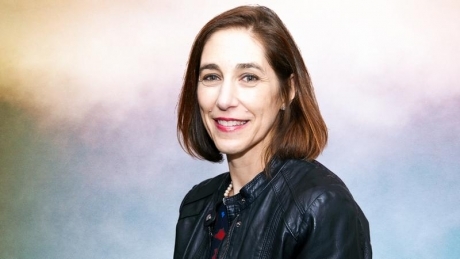
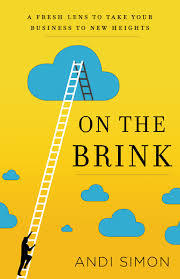 BOB BLAND
BOB BLAND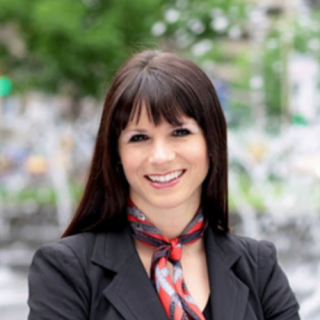
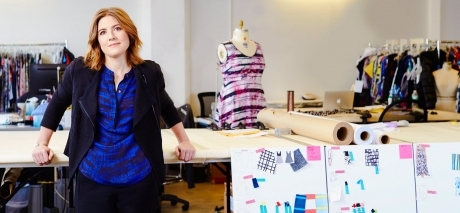 CHRISTINE HUNSICKER
CHRISTINE HUNSICKER

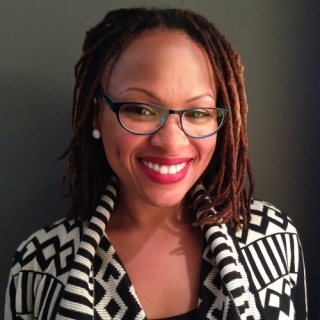 LISETTE TITRE-MONTGOMERY
LISETTE TITRE-MONTGOMERY
 LISEN STROMBERG
LISEN STROMBERG
 TRISH NELSON
TRISH NELSON
 SAIREE CHAHAL
SAIREE CHAHAL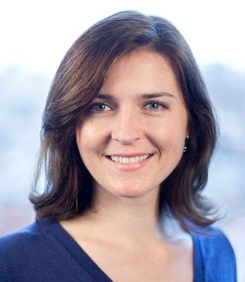 KATHLEEN STETSON
KATHLEEN STETSON
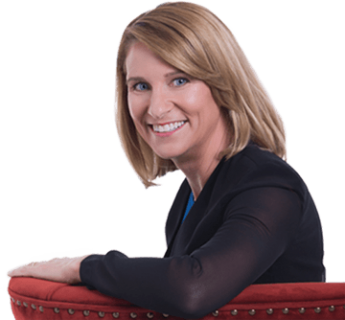 STEPHANIE BREEDLOVE
STEPHANIE BREEDLOVE
